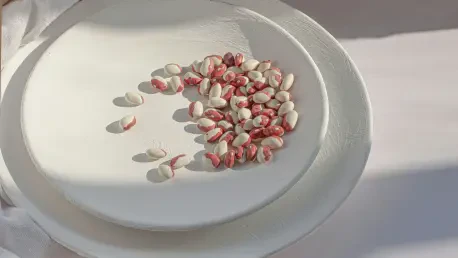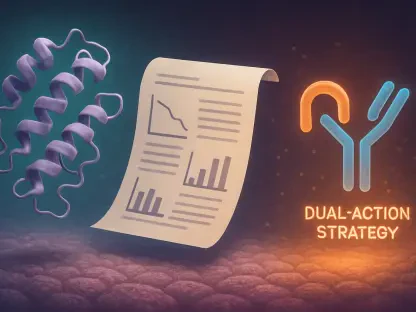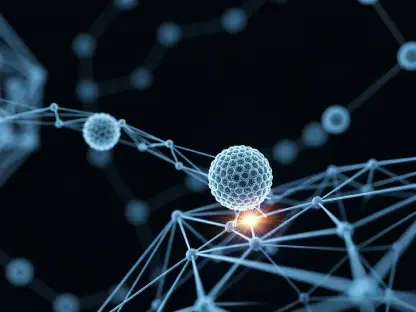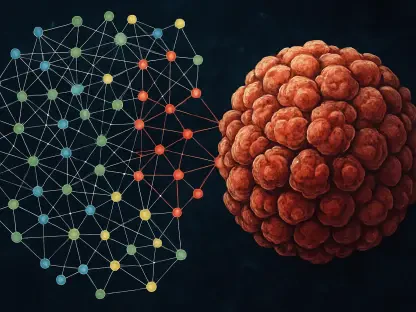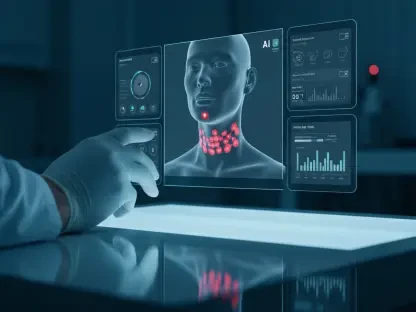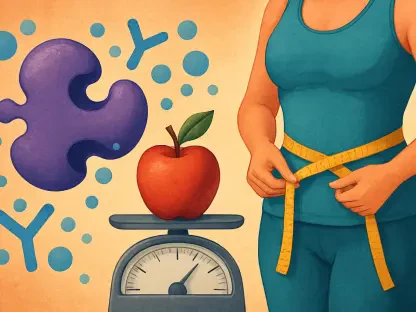The synergy of synthetic biology and 3D printing technology has created a significant shift in food production, promising a profound impact on both industry practices and consumer experiences. By transforming the way meals are created and consumed, this blend of technology offers potential solutions to global food challenges.
Introduction to 3D Food Printing
The Intersection of Technology and Food
Incorporating synthetic biology with 3D food printing is revolutionizing food creation, combining two advanced fields to push culinary boundaries. By harnessing the principles of additive manufacturing, 3D food printing involves the precise layering of ingredients to create intricate food items. This innovative approach allows for more creativity in food design, enabling not only aesthetic enhancements but also the embedding of essential nutrients tailored to specific dietary needs.
This technological convergence represents a promising direction for the future of food production, balancing art and science. It extends beyond mere novelty, addressing core concerns in food supply, nutritional customization, and ecological impacts. By offering precision in ingredient use and food structure creation, it allows for a shift from standard mass production to bespoke solutions, fostering a new era of food innovation that aligns with consumer health priorities and sustainability goals. Such adaptability is particularly crucial in an age where food security and ecological responsibility have become pressing global issues.
Redefining Food Production
The precision inherent in the process of 3D food printing allows for a level of customization previously unattainable in traditional manufacturing methods. This technology employs intricate layering techniques to build personalized food products where flavors, colors, and nutrients are meticulously integrated. Such specificity not only caters to individual taste preferences but also addresses specific dietary requirements by enabling the embedding of necessary vitamins and minerals directly into food structures.
As this technology continues to circulate within the manufacturing ecosystem, it reshapes traditional food production paradigms by integrating health-focused innovations with efficient and sustainable practices. The potential to produce nutrient-dense foods on demand aligns closely with health and wellness trends, potentially reducing reliance on pre-packaged or heavily processed foods. This means reimagining kitchen spaces and restaurant menus, bolstering the potential for home appliances capable of instant food customization or eateries offering entirely bespoke dining experiences.
Personalized Nutrition Revolution
Tailored Dietary Solutions
The impact of 3D food printing extends beyond novelty, particularly when considering its transformative role in personal nutrition. Individuals often face challenges when attempting to adhere to specific dietary programs or accommodate various nutritional needs. Here, 3D printing technology offers a remarkable solution, creating tailored food products designed to fit precise dietary profiles. This personalization is not merely about preferences but is increasingly becoming a necessity for managing health conditions that require strict dietary adherence.
By integrating synthetic biology, the personalization aspect is further enhanced. This next-level customization is achieved through biotechnological applications that engineer microorganisms capable of biosynthesizing essential bioactive compounds. These compounds can be refined to produce specific nutrients, probiotics, or flavors, allowing for the creation of functional foods that cater to individual health requirements. The merging of biology and technology thus provides a foreseeable route toward optimizing dietary intake, promoting better health outcomes, and potentially alleviating some pressures on healthcare systems.
The Role of Bioactive Compounds
The revolution in personalized nutrition facilitated by 3D food printing is significantly grounded in the role of bioactive compounds. Through the use of engineered microorganisms, these compounds are tailored for inclusion in food products, enhancing functionality and health benefits. Bioactive compounds are critical in food science due to their ability to influence biological processes and support health beyond basic nutrition. They include probiotics, antioxidants, and phytochemicals, all known for their health-promoting properties.
In this context, synthetic biology becomes pivotal in developing microorganisms that efficiently biosynthesize these components in targeted ways. These advancements allow for the design of foods that do not sacrifice taste or satisfaction while profoundly contributing to dietary health. Such engineering efforts pave the way for an on-demand nutritional model where deficiencies can be corrected through precisely crafted dietary solutions. This could potentially diminish the need for dietary supplements by integrating essential nutrients seamlessly into daily meals, making health maintenance more intuitive and accessible.
Sustainability in Food Manufacturing
Minimizing Waste
3D food printing introduces several avenues for enhancing sustainability within the food manufacturing sector. One of the primary ecological concerns today is the substantial amount of waste generated from food production and consumption. By focusing on 3D printing, a significant reduction in waste can be achieved given the precise portioning and optimized ingredient use the technology enables. This precision ensures that ingredients are used most effectively, minimizing excess and thereby reducing the overall carbon footprint of food production processes.
The exacting nature of 3D food printing translates into a production method that is not only efficient but also more predictable, reducing the need for surplus production “just in case.” This benefit trickles down from large-scale manufacturers to individual consumers, allowing the production of meals tailored to exact consumption, reducing leftovers and food spoilage. As these practices expand, they form part of a broader commitment to establishing sustainable supply chains that meet rising consumer demand for environmental stewardship while not compromising the quality and availability of food products.
Alternative Ingredients
In tandem with reducing waste, 3D printing technology supports sustainability through the use of alternative ingredients. The advent of synthetic biology in food production allows for the use of engineered proteins, such as those derived from algae, insects, or plant-based substitutes, which traditionally might not have been suitable for mainstream culinary applications. These alternative ingredients present viable solutions to some of the most pressing challenges associated with traditional agriculture, namely land and water usage, and greenhouse gas emissions.
By shifting towards more sustainable ingredients and integrating them into everyday food products, 3D food printing plays a role in decreasing reliance on traditional animal agriculture. This transition is vital not only for reducing the ecological footprint of food production but also for promoting food security amid a growing global population. Being able to adaptively use surplus produce and proteins that would otherwise contribute to agricultural waste further highlights the system’s potential. Such advancements align well with ecological imperatives and consumer interest in sustainable and ethical food sources.
Advances in Bioprinting
Precision and Accuracy
Bioprinting stands at the forefront of technological innovation in food manufacturing, bringing unparalleled precision and accuracy to the fabrication of edible structures. Recent advances in bioprinting have achieved levels of micron-scale accuracy, setting the stage for creating food products with precise geometries and customized nutritional compositions. This level of detail allows for a seamless integration of nutrient and flavor profiles into the food’s fabric, making it possible to target individual preferences and health requirements with remarkable exactness.
Such precise control in bioprinting plays a crucial role in expanding culinary boundaries, where creative and nutritional goals are met with scientific exactitude. Through advanced software and computing capabilities, these bioprinting systems can layer bioinks with exquisite detail, enabling the creation of food products once considered unattainable or complex. This technological leap constitutes a significant shift, not just in how food is manufactured, but in how it is perceived, allowing for innovation in areas of texture, taste, and appearance that redefine expectations of dining experiences.
Novel Textures and Flavors
Bioprinting’s precision enables the crafting of innovative textures and flavors, turning conventional culinary concepts on their head. Through the calculated placement of cells and bioinks, it allows for the exploration of novel sensory experiences in food, opening a world of possibilities to chefs and food developers. This translates to the creation of complex, multi-layered gastronomic experiences that engage multiple senses, all while being rooted in nutritional science.
The fusion of artistic creativity with scientific rigor through bioprinting technology is reshaping food aesthetics and functionality. Consumers can now look forward to meals that are not only nutritious but also offer a variety of tastes and textures previously unattainable through standard food preparation. This broadens the horizons for product differentiation and personalization, essential factors for attracting discerning consumers looking for both taste and health benefits in their food choices.
Engineered Microorganisms
Biological Factories
Engineered microorganisms are emerging as cornerstone elements in the transformation of food systems, serving as biological factories in the manufacturing process. These microorganisms, often genetically modified, are employed to produce specific food ingredients such as pigments, flavors, and essential nutrients, offering a sustainable alternative to traditional agricultural practices. By functioning as factories at the cellular level, they convert raw biological materials into valuable food additives with precision and efficiency, overcoming limitations of natural ingredient availability and environmental impact.
Such biotechnological advancements enable the production of highly functional food items, rich in desired compounds while maintaining efficiency in resource use. The application of these living systems within bioprinting highlights their role beyond ingredient production; they become integral to the process of creating living foods capable of self-repair or adaptive qualities. The remarkable capacity of microorganisms to serve tailored purposes revolutionizes traditional concepts of food manufacturing, paving the way for products that promise consumer welfare and environmental protection.
Transformation of Food Systems
The influence of engineered microorganisms extends into the transformation of food systems, altering the fabric of food production and supply chains. These bioengineered entities have facilitated a paradigm shift towards more adaptive and responsive food systems capable of meeting evolving consumer demands and sustainability requirements. By introducing microorganisms that can grow, change, and adapt, the concept of food itself expands beyond simply being a source of energy or sustenance, presenting new opportunities for the integration of functionality at the genetic level.
The ability to engineer microbial entities for specific production purposes translates to numerous advantages such as reduced agricultural land use, optimized nutrient cycles, and tailored production techniques that diminish reliance on unfavorable agricultural practices. As food systems start embracing these biotechnological approaches, the environmental and economic outlook improves, offering better control over ingredient sourcing, transportation, and production timelines, streamlining processes in line with modern consumption needs and ecological sensibilities.
Complexity of Food Structures
Innovation in Layering Techniques
The ability to construct intricate food structures using advanced bioprinting and synthetic biology technologies showcases the scope of innovation in the field. These cutting-edge layering techniques provide the ability to manipulate how layers are deposited and interlinked, resulting in complex, multi-dimensional food products that offer both aesthetic and practical benefits to consumers. Such innovation allows for enhancements in food presentation, blending artistry with function to deliver creative culinary expressions that appeal to both the eye and the palate.
These advanced structures can be optimized to hold specific nutrient profiles, flavor concentrations, and even textures that cater to individual dietary preferences. The integration of engineered living cells provides dynamic functionalities to these structures, offering adaptable features to foods that can respond or self-adjust in certain environments. These novel capabilities signify a profound change in what food can offer, extending beyond a mere response to basic hunger or nutritional needs to foster a broader array of dining experiences that are both enjoyable and beneficial to health.
Tailored Nutritional Profiles
Beyond aesthetic qualities, the interaction between synthetic biology and 3D printing establishes a process where foods are tailored to deliver specific nutritional profiles. The layering techniques not only introduce complexity in form but also precision in nutritional composition, allowing multiple layers to carry varying nutrient densities and bioactive contents. This thoughtful design can meet precise dietary requirements, addressing common health challenges by embedding required nutrients directly into the consumable form.
The potential for crafting meals meticulously tailored to one’s biological needs introduces a new era of health management through diet. It allows for the mitigation of deficiencies and the management of chronic conditions directly through personalized meal preparation. Such advancements can provide broader accessibility to nutrition, reducing reliance on supplements and ensuring that dietary goals can be naturally and seamlessly incorporated into daily eating habits, enriching both the eating experience and overall health outcomes.
Trends and Consensus in 3D Printing
Integration of Living Cells
A prominent trend within the field of 3D food printing is the integration of genetically modified living cells into food structures, enhancing adaptability and functionality. The use of these cells in creating food blurs the traditional boundaries between technology and biology, offering exciting opportunities for food to possess living qualities such as self-repair, adaptability, and responsive changes to environments. These capabilities position food as an active entity that may adjust to varying conditions or boost nutritional properties over time.
The consensus among leading experts is that these advancements reflect a pivotal moment in food technology, marking a shift from static food items to dynamic nutrition providers. This integration is fostered by combining scientific ingenuity with consumer-driven demands for more sophisticated and interactive food products. As technology continues to mature, the concept of living foods could further revolutionize dietary regimes, potentially offering high-level responses to health crises where rapid nutritional interventions are required.
Customized Nutritional Offerings
The capacity of 3D printing technology to deliver highly specific nutritional content tailored to individuals is a consensus viewpoint shared broadly within the industry. As consumer awareness around health and wellness increases, so does the demand for personalized nutritional offerings that cater to unique health profiles or preferences. This customization represents not just a trend but a paradigm shift in food production, allowing consumers to proactively engage with their dietary requirements on a granular level.
Through collaboration between technology providers, nutritionists, chefs, and scientists, the potential for personalized nutrition is continually gaining momentum, suggesting a future where food can be effortlessly adapted to personal health metrics and lifestyle patterns. As such products begin to mainstream, they provide a vital solution to the growing problem of dietary and health needs not being adequately met through conventional food systems, emphasizing a movement toward empowerment in making health-centric food choices.
Challenges and Limitations
Range of Ingredients
Despite the promise of 3D food printing technology, the range of printable ingredients available remains a limiting factor. While there are ongoing efforts to expand the library of printable materials, the current repertoire corresponds largely to certain categories, predominantly involving alternative proteins and select bioactive components. This limitation curtails the diversity of foods that this technology can produce, necessitating further research and development to widen the scope of applications and incorporate a broader variety of dietary substances.
The current restrictions mean that some traditional food attributes and flavors remain a challenge to replicate, posing difficulties in matching consumer expectations for conventional food experiences. As the field advances, innovations in material science and synthetic biology will be needed to overcome these constraints, leading to increased versatility in food composition and the ability to replicate or innovate traditional dishes and cuisines in new ways. The hope lies in the diversification of printable materials, creating a pathway for broader applicability across global cuisines and dietary needs.
Cost and Regulation
High initial costs remain a significant barrier to the widespread adoption of 3D food printing technologies, with the expense of equipment and materials often cited as a deterrent to potential adopters. This challenge is further compounded by evolving regulatory landscapes that require stringent compliance and safety standards, particularly concerning the use of biotechnology in food. The regulatory frameworks governing 3D food printing are being actively developed, with uncertainty often stemming from the novel nature of the materials and processes involved.
The need for clear and coherent guidelines is crucial to facilitating the responsible deployment and scaling of 3D food printing capabilities. Overcoming these obstacles requires collaboration between industry stakeholders, regulatory bodies, and policymakers to establish standards that ensure public safety while fostering innovation. As technologies become more cost-effective through advancements and economies of scale, their potential for mainstream adoption increases, suggesting a gradual but promising pathway towards the normalization and acceptance of these novel food products.
Ethical and Regulatory Considerations
Safety Standards
Adhering to safety standards is imperative as 3D food printing becomes increasingly mainstream, particularly when dealing with genetically modified components. Creating a regulatory framework that supports innovation while maintaining consumer trust and safety is essential. With the involvement of genetically modified organisms in the production process, public concerns over food safety and quality assurance necessitate robust oversight and standardization in production practices, ensuring the health and well-being of consumers.
Industry-wide collaboration is needed to establish transparent processes and guidelines that overcome natural apprehensions related to novel food technologies. Clear communication around the benefits, safety, and potential risks associated with bioprinted foods is vital to fostering understanding and acceptance. Establishing stringent safety protocols that are consistently applied across the industry will be central to the technology’s sustainable evolution, ensuring that the innovations introduced serve to enhance, rather than compromise, nutritional safety and quality.
Transparency and Guidelines
As regulatory bodies develop guidelines, ensuring transparency in production and labeling processes becomes increasingly important. Consumers demand openness about food ingredients and origins, driving the need for comprehensive labeling that provides clear information about the nature, source, and composition of bioprinted foods. This transparency extends beyond compliance with existing regulations to encompass ethical considerations surrounding the environmental, social, and health impacts of food production.
In establishing these guidelines, there must be a balance between encouraging innovation and preserving consumer trust through understandable and accessible information. As public attitudes shift towards more informed food choices, regulatory bodies are tasked with enforcing standards that facilitate informed decision-making while supporting industry growth and technological advancement. Such measures will be instrumental in integrating ethical considerations into the regulatory landscape, fostering confidence and widespread acceptance of 3D-printed foods as part of the modern diet.
Synthesis of Information and Future Directions
The integration of synthetic biology with 3D printing is revolutionizing the food industry, creating an exciting transformation in both how food is made and how it is consumed. This cutting-edge combination has the potential to address pressing global food issues by offering innovative and sustainable alternatives. With synthetic biology, scientists can engineer microorganisms to produce food components such as proteins, fats, and carbohydrates in a more efficient and eco-friendly manner. When paired with 3D printing technology, these components can be transformed into visually appealing and nutritionally tailored meals. This synergy not only enhances the efficiency of food production but also allows for the customization of textures, flavors, and nutritional content to meet individual dietary needs and preferences. Additionally, this advancement could reduce the reliance on traditional agriculture, decreasing the environmental footprint associated with food production. By optimizing resource use and minimizing waste, synthetic biology and 3D printing together promise to ease the burden on the planet. As these technologies advance, they hold the promise of delivering more equitable access to nutritious and sustainable food options on a global scale, shaping the future of what we eat.
